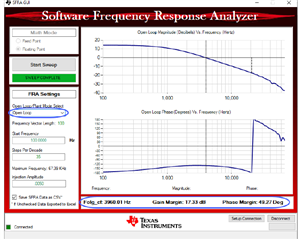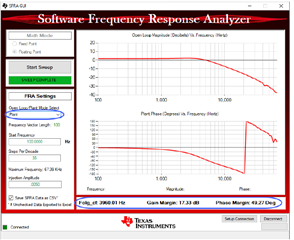Other Parts Discussed in Thread: SFRA
Hi,
The default compensation for closed loop PCMC is Z0 = 0.0001kHz, Z1 = 25kHz and P1 = 3kHz. I believe the current mode requires only 1 pole and 1 zero for compensation. while the DCL22 means two pole and two zeros. Could you please explain the values of zero and pole used by default. what does Z0 value mean here? It is too low. And Z1 and P1 values also seem to be odd having zero after the pole.
Also in VMC, I can only see two zero and one pole in the code. where is the second pole placed?
Thanks,
Ajit




